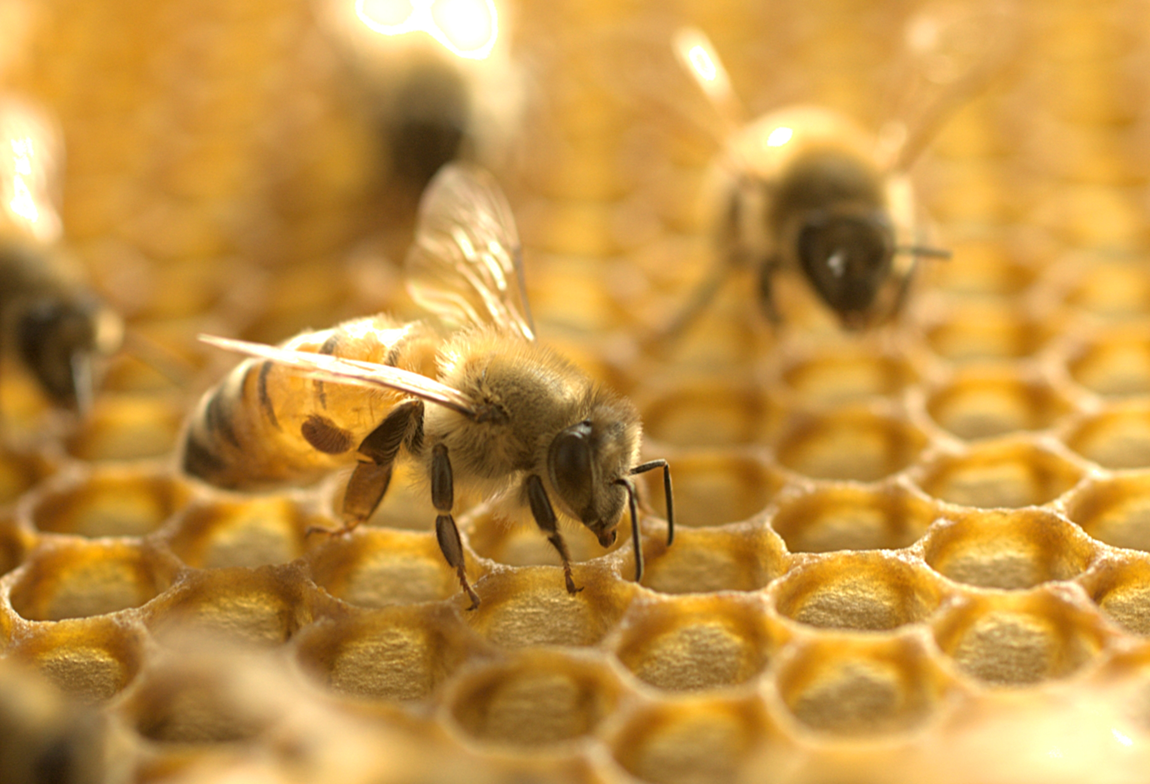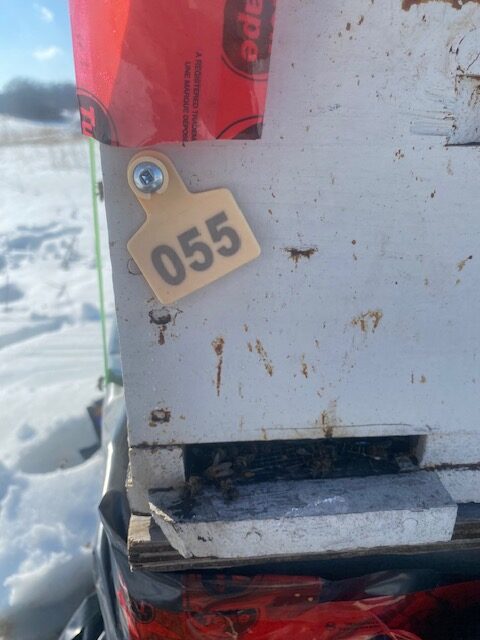
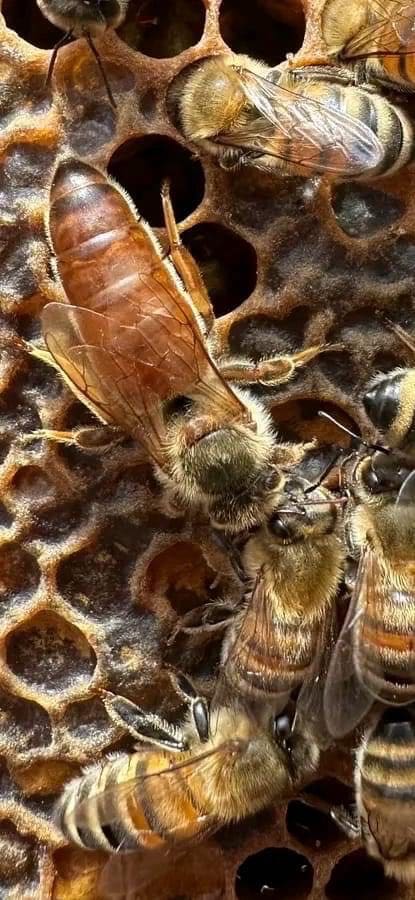

Importing queen Bees comes with a lot of benefits, and a lot of risk. We had a good year. We purchased 20 from Italy. Of those, 17 went right through April and May, and swarmed but the F1 queens were excellent. Of the original, we had 3.
Each of these queens are worth their weight in Gold to us, because they are the genetics we will breed from if they survive the winter.
We grafted between 200 and 225 queens off these imported queens. Of those, about 175 to 200 of the virgins came back from their flight, and about 90% of the queens were well bred.
We continued breeding till the first week of September, some of these queens will overwinter in nucs. We want to see if they will survive the entire 2025 season.
Some Facts about why buying Queen bees can go wrong:
- Overheating can damage the sperm in the spermatheca. They will lay for a couple of months but then fail. So, if you buy queens and you really want those genetics, then you want to graft, or produce cells early in the season.
- They are not acclimatized to your environment, weather, food sources, etc.
- Stress – it is the bain of all lifeforms.
- Disease, bacteria, and Fungus. She may have no tolerance or resistance (antibodies) for the variations of diseases, bacteria, and fungus in your area. This might be compounded if you do not put her in a clean, new hive.
- You didn’t wait until there was no viable larva in the hive (7 days from last laying) to make a queen and the bees rejected her. Or, there was a virgin or queen in the hive that you didn’t notice and they rejected her, or the queens fought. (if you have any eggs or young larva the hive will kill a queen because they want to make their own)
- You left the queen in the sunlight. One buyer I knew put 5 queens on their car dash for 5 minutes and lost them all.
- The queens were overheated, or chilled, when you buy them. When we went to Toronto Airport to get queens, we put them in an incubator with a damp towel and a sensor that measured temperature and humidity. We had to drive from Toronto to Aylmer with the windows open, in April, In Ontario Canada. John and I froze, but the queens stayed the right temperature.
- You bought a queen that has only been laying for 14 days, not 21 days, and the hive rejected her. The 14 day queen is a good business model because the provider can supply 6 queens in a season, not 4 queens. The problem is that the 14 day queen does not have a full pheromone so the bees release her.
- (We found the same with the queens we raised in an incubator. If we put them into a mating nuc on day one, they were killed. If we put them in a nursery for 5 days and then put her in a mating nuc, they accepted her. )
NOTE: We will be bringing in Tenuta Queens again spring 2025. Orders must be put in before March 1. https://www.tenutailritiro.com/ Order your nucs with a Tenuta Buckfast Queen Here.
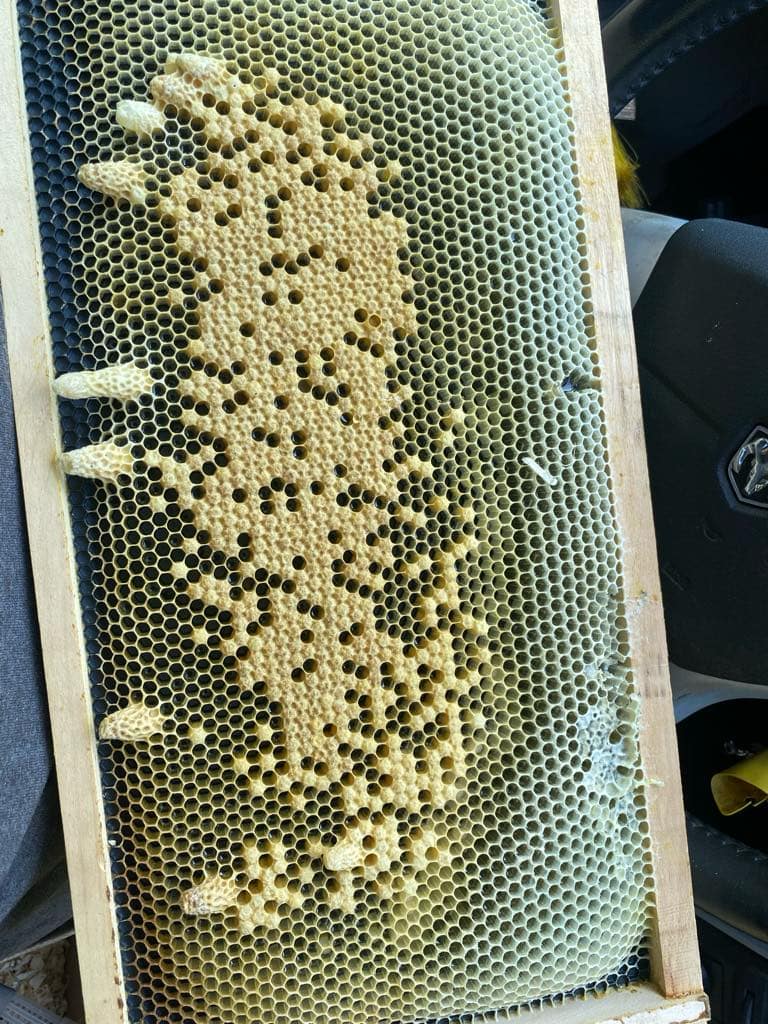
The daughters we imported quickly replaced some queens. This frame shows a nice brood pattern but a lot of removed cells. The varroa mite on this hive were under 2%. So, why did they replace her?
She might have been bred by a closely related drone. Or, maybe the hygienic behavior was too rigid. It could have been none of the common reasons. It might have just been a fluke.
Of the 20 queens we purchased this year only 3 showed these symptoms.
The important thing to realize is that this is common. It could have happened with queens that we bred.
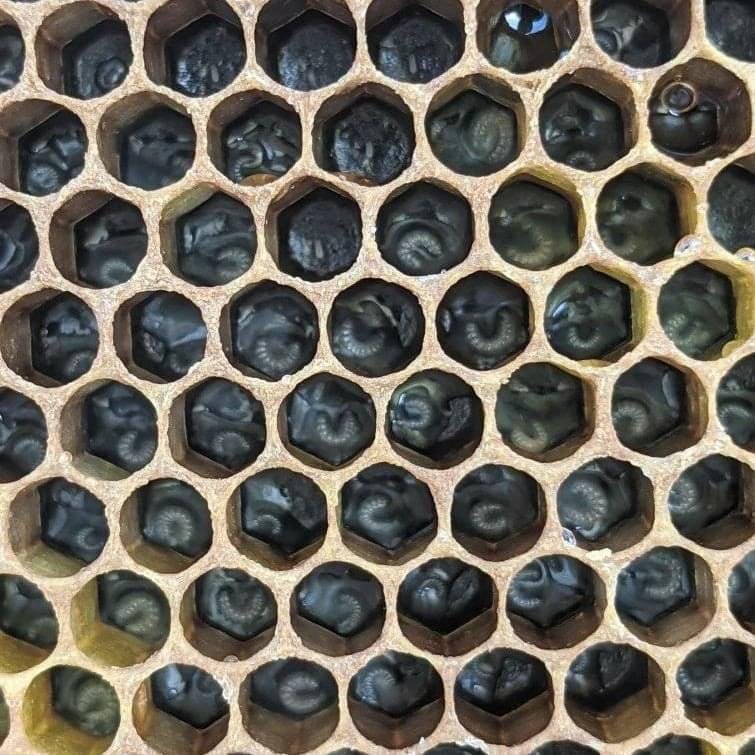
This is the type of laying pattern the queens showed right into the middle of June. 90-100% completely covered frames, with larva floating in royal jelly.
The queens, and their daughters laid 1-3 frames a week, right into the first week of July, before we saw the typical pattern of brood, pollen, and honey.
1 of the original queens, and 5 of the F1 daughters were still laying in November.
We bought the first 10 queens in a package, and split them in 14 days, adding a caged queen, with 9/10 queens accepted.
The brood factories gave us 1 – 3 frames of brood a week. We removed 1 frame of brood, a week building 25 brood factories. These produced 65 nucs in 6 weeks.
There was a high level of swarming in the second last week of June. We caught 3 of the swarms, and put them in production hives. We did not graft from them.
So, our first year buying imports was highly successful. At the end of the year we still had 3/20 original queens, and had 150 hives in June, and 90 hives in November. Some of the virgins failed, and some of the weaker hives we pinched the queens and combined them with other hives.
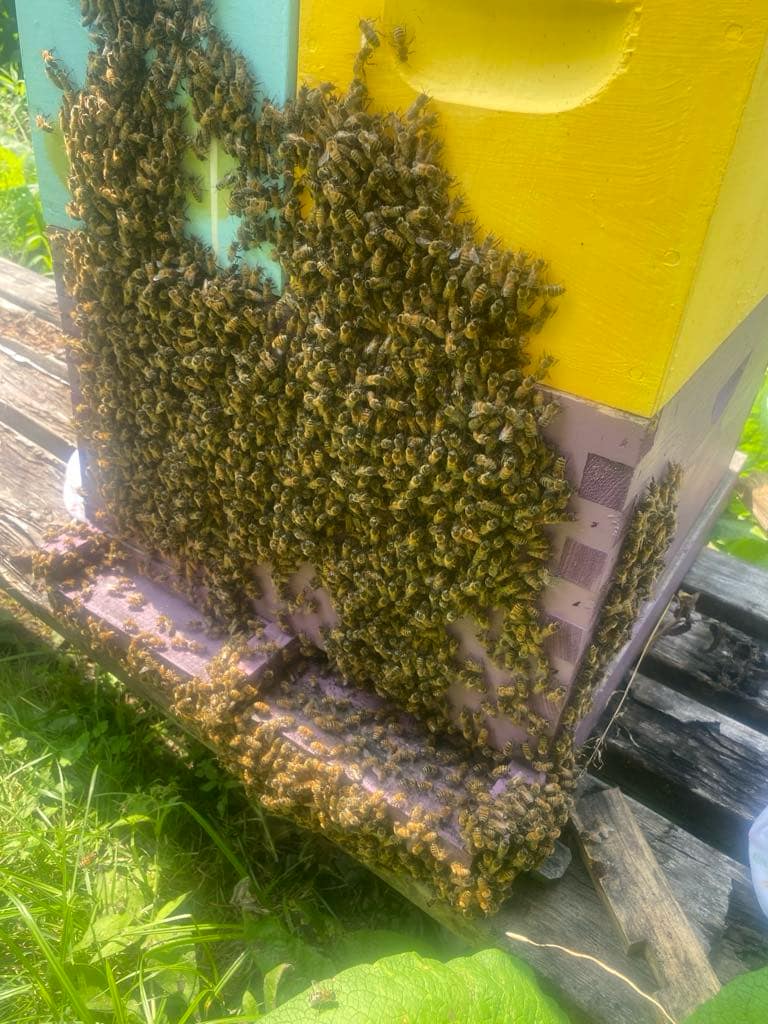
Was Importing packages and queen bees worth it?
Absolutely. The queens increased from 10 to 150 through the production season. The ones that requeened did so, successfully, and were wrapped up for the last year. We have 70 daughters that survived our culling, and were wrapped for overwintering.
We have new genetics to reduce inbreeding in our yards. They made us about 1200 frames of drawn comb, and still produced a moderately successful honey harvest.
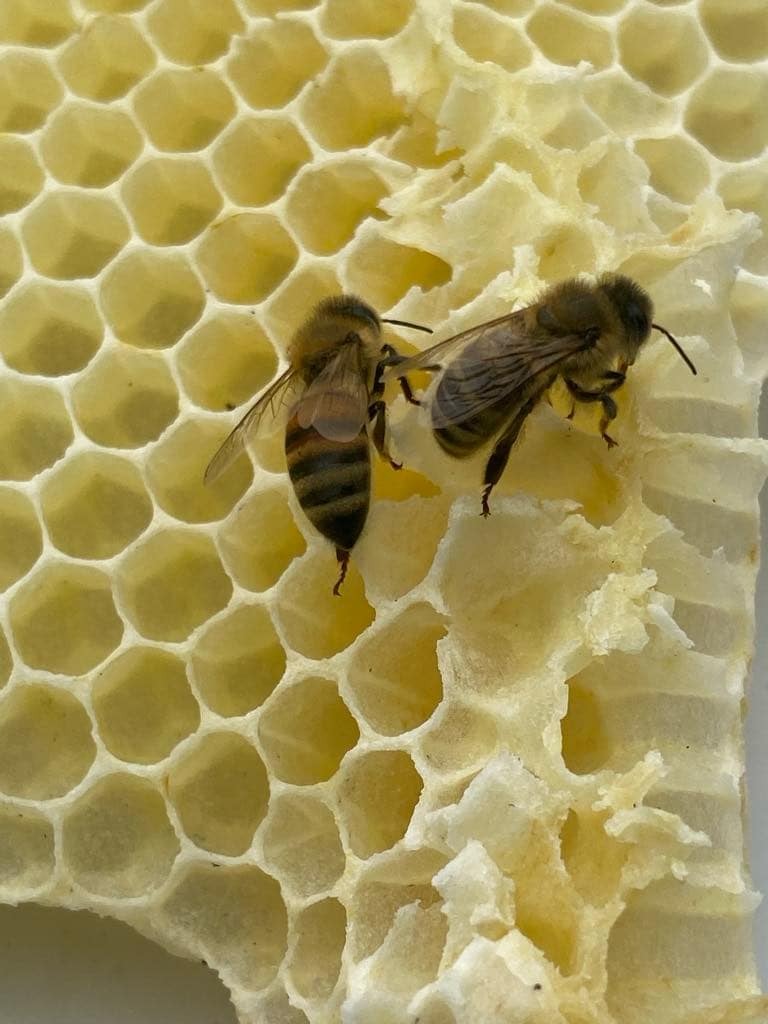
Post tags :
Share :
Latest Post

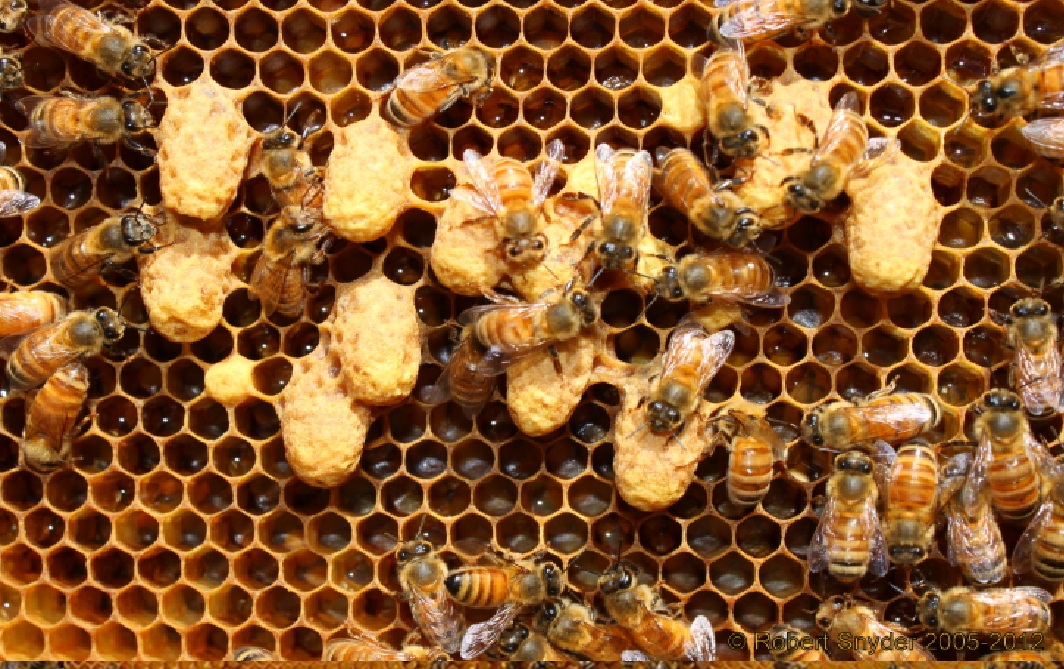
The Beekeeping Year Starts in August – Part 3 – Preventing Swarms
Buying and Transporting Queen Bees
